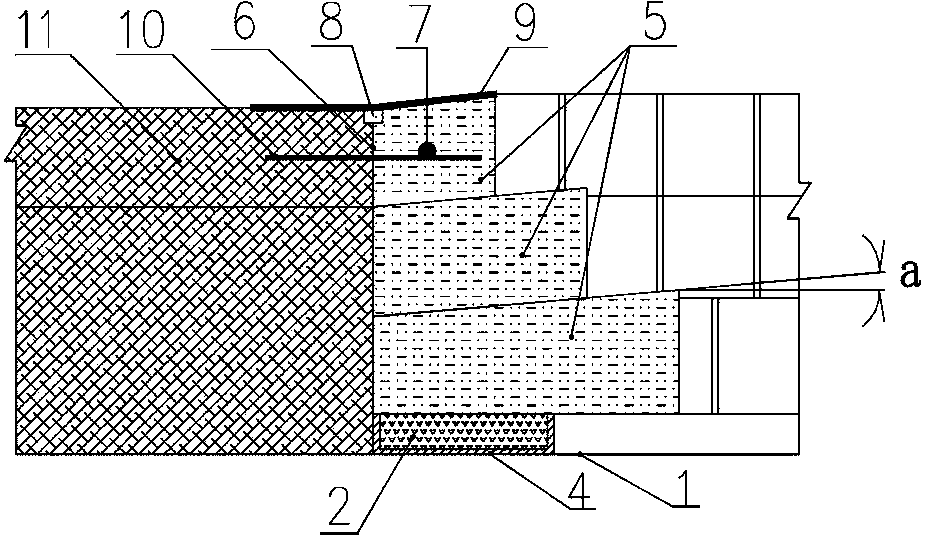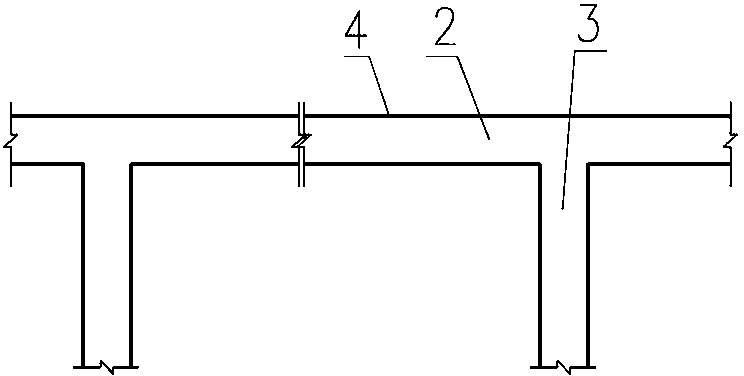Construction method for joining new and old pavements in road widening project
A technology for old roads and roads, which is applied in the field of road connection, can solve problems such as the failure of the connection between new and old roads to effectively form a whole, the difficulty of milling and planing cement concrete slabs, and the transverse cracking of cast-in-place plain cement concrete, etc., to achieve synergistic force bearing The effect of reduction, uniform force, and reduction of variance
- Summary
- Abstract
- Description
- Claims
- Application Information
AI Technical Summary
Problems solved by technology
Method used
Image
Examples
Embodiment Construction
[0029] like Figure 1-2 Shown, in the road widening described in the present invention, new, old pavement join construction method, carry out according to the following steps:
[0030] The first step is to mill the edge of the asphalt pavement layer of the old road 11. The milling width is 30cm to form an overlapping step. The milling edge should be straight and the cutting seam should be kept perpendicular to the road surface, and then the loose sides of the side should be cleaned manually. pellets;
[0031] Second step, for the road section where the asphalt pavement cement concrete slab of the old road 11 is of good quality, the original cement concrete slab is no longer cut off, and only the base and subbase of the old road 11 protruding from the outside of the concrete slab are cut off neatly during construction;
[0032] In the third step, the roadbed top surface 1 of the widened new road is located below the lap joint to set a longitudinal gravel blind ditch 2 and a tr...
PUM
 Login to View More
Login to View More Abstract
Description
Claims
Application Information
 Login to View More
Login to View More - R&D
- Intellectual Property
- Life Sciences
- Materials
- Tech Scout
- Unparalleled Data Quality
- Higher Quality Content
- 60% Fewer Hallucinations
Browse by: Latest US Patents, China's latest patents, Technical Efficacy Thesaurus, Application Domain, Technology Topic, Popular Technical Reports.
© 2025 PatSnap. All rights reserved.Legal|Privacy policy|Modern Slavery Act Transparency Statement|Sitemap|About US| Contact US: help@patsnap.com


